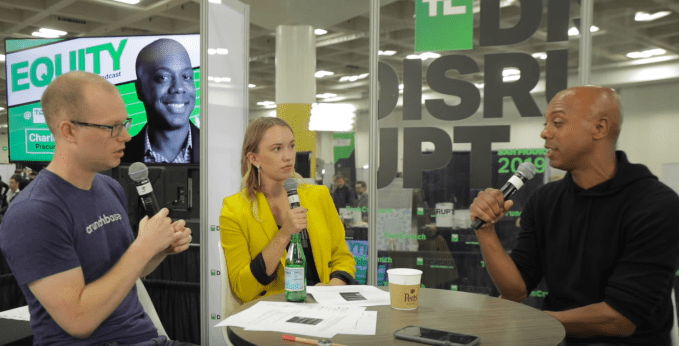Jason Levine is the executive director of the
Center for Auto Safety, a national nonprofit organization focused on vehicle safety since 1970.
Every day in the United States, more than 100 people die because of a car crash. Some are teenagers, like the daughter of writer Michael Lewis and Tabitha Soren, and her boyfriend, who died in a wrong-way crash. Some are well known, like Kevin Clark, who played the drummer in “School of Rock,” who was hit and killed by a driver while biking. Others are not household names, like Janell Katesigwa, who was killed by a drunk driver in Albuquerque, New Mexico, and left behind four children.
Something else happens every day, too: a lack of congressional urgency to require available technology to prevent the next tragedy.
Sadly, what is stopping advanced technology from preventing these deaths is business as usual in Washington, which means a lot of talk about saving lives, but little action.
Vehicle safety is based on using layers of protection that have led to a five-fold reduction in the occurrence of car crash deaths in the United States over the last 50 years.
Existing advanced vehicle safety technology, such as driver monitoring systems, automatic emergency braking and lane-departure warnings, can dramatically reduce crashes like the three described above — and the thousands of others that are a result of drunk, drugged, drowsy and distracted driving.
But only if the technology becomes standard equipment in new vehicles. When technology — underwritten by standards, bolstered by oversight and backstopped by accountability — can annually spare tens of thousands of families from tragedy, our federal government must act.
Over the coming weeks and months, Congress will debate the future of motor vehicles in the United States. The debate will be focused on renewing the Surface Transportation Reauthorization Act, which is also referred to as the “highway bill.”
But make no mistake: While issues such as the future of the gas tax and arcane parliamentary procedures will grab headlines, vital decisions will be made about whether the growing and preventable public health crisis of car crash deaths will be prioritized or once again considered non-essential.
Despite the estimated 38,680 highway fatalities last year, which represented a 7.2% increase over 2019, some federal policymakers have failed to focus on available remedies that would result in fewer funerals and a reduction in lifelong debilitating injuries.
Perhaps the delay is a result of too many in Congress who believe the only available solution is rushing unsupervised driverless vehicles into the marketplace. Even if a green light for mass driverless vehicle production were given today, it would be decades before they could make a significant impact on improving overall safety. This single-minded focus on a unicorn to fix all transportation issues misunderstands the technical challenges and misreads the public mood.
A recent AAA survey found 86% of respondents would not trust riding in driverless vehicles, while another found consumers do not feel comfortable sharing the road with them. The technology industry’s habit of beta-testing unproven software on the public, combined with car companies’ track record of delaying safety in exchange for profit, will not increase consumer trust of the safety, inclusivity and equity of driverless technology.
Vehicle safety is based on using layers of protection that have led to a five-fold reduction in the occurrence of car crash deaths in the United States over the last 50 years. Seatbelts and airbags protect you when you crash. Electronic stability control and anti-lock brakes help you avoid rolling over. Regulations provide minimum levels of performance and recalls serve as a backstop to provide oversight when there is a defect.
It is hard to remember, but there was once a time when dual braking systems, intended to provide a safe stop even in the event of a catastrophic failure of one braking system, were considered revolutionary. Now such a layer of protection is standard.
At a time when the promise of automated vehicle technology could make or break America’s place atop the automobile industry, many in Congress want to ignore history and cut away layers of protection to rush driverless vehicles into the marketplace. One Senate proposal creates a fast track for manufacturers to sell tens of thousands of automated vehicles based on a flimsy promise that their vehicle is as safe as the least safe vehicle meeting current minimum standards. No one should forget that the Ford Pinto met all the minimum standards when it was recalled for exploding upon impact when hit from behind. Driverless vehicles should be held to a higher standard than the minimum.
Congress has an opportunity to help build public trust in the safety of driverless technology by requiring existing innovations that will be the building blocks of driverless vehicles into cars right away, with immediate benefits. For example, in the future, automated vehicles will need driver monitoring systems to make smooth handoffs between machine and driver, automated braking to avoid crashes and lane-keeping technology to keep vehicles where they belong. Today these systems, when working correctly, can help limit crashes by assisting human drivers, just as someday these features may assist computer drivers. Using technology to save lives now does not preclude saving more lives later.
As Congress begins to actively debate the future of the automobile industry, there is a lot of talk about upgrading roads, encouraging electric battery-powered vehicles and accelerating the introduction of driverless cars. Yet, there is not nearly enough talk about what is needed to make us all safer sooner.
There have been a variety of reasonable bills introduced to help the U.S. catch up to the rest of the developed world when it comes to vehicle safety and safeguarding pedestrians. They include improving the safety of our back-seat passengers in crashes, better recall procedures, and more robust and transparent data collection, along with requiring advanced safety features now common around the world.
Unfortunately, we have a long way to go and no time to waste. The European Union, despite a larger population and an almost identical number of vehicles and land size, had under 19,000 crash deaths last year, less than half of the U.S. death toll. Further, the EU’s record-low vehicle-related deaths came without a single driverless vehicle on the road, but with robust consumer information and a regulatory scheme that mandates safety.
In the U.S., however, car manufacturers concerned about challenges from new market entrants — foreign and domestic — are lobbying for looser regulations and immunity from responsibility for automated vehicle crashes. Congress must push the industry to move quickly to protect lives before profits and stand behind their products when things inevitably go wrong. The best time to appropriately assign accountability regarding who will be held responsible if a car with a computer driver kills your loved ones, or a systemwide defect impacts an entire driverless fleet, is before the crash.
Moreover, history demonstrates that thoughtful requirements for all vehicles, crafted in a way to keep pace with major innovations in the automobile industry, have always been necessary to ensure vehicle safety is not reserved for the rich alone.
Federal legislation requiring objective performance standards based on data collected from driverless cars being tested on public streets can provide a path to this future. Yet Congress seems poised to do little, or nothing, once again. It is time for policy makers to reconcile the notion that the long-term viability of the driverless vehicle industry and keeping public roads safer now with incremental improvements, federal oversight and legal responsibility are not opposing ideas but necessary partners.
There is no question the U.S. can lead in the coming era of vehicle innovation while improving safety for all drivers, passengers and pedestrians. Success in this ambitious task will require moving forward quickly with existing safety technology and dispensing with the idea that innovations, safety and accountability are incompatible when, in fact, each is integral to the long-term success of the other.

Source: Tech Crunch










